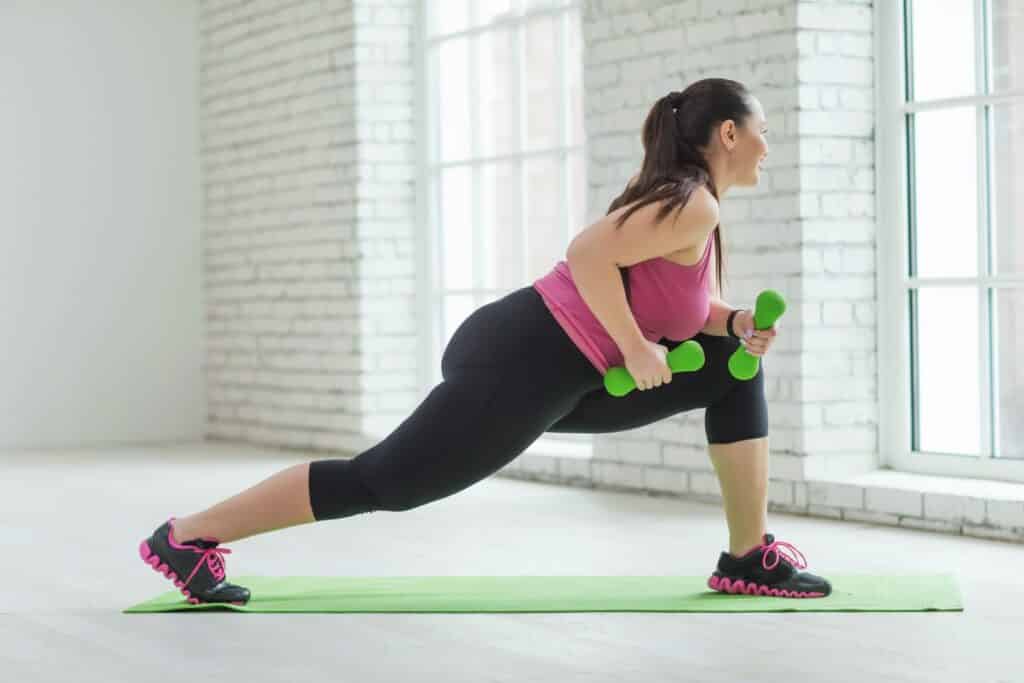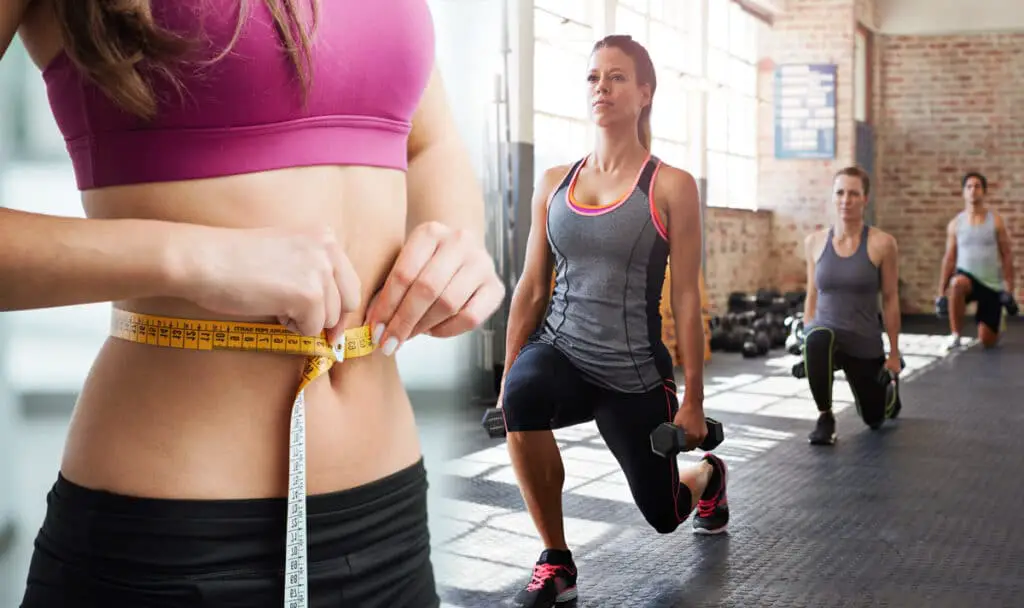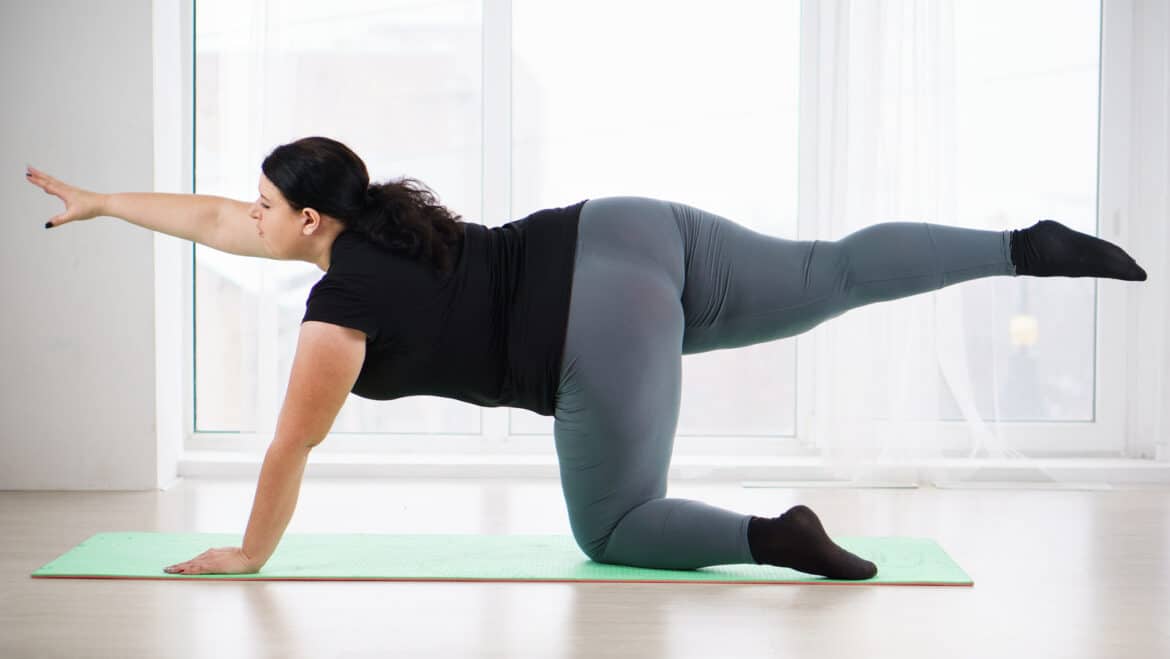Introduction
Is Pilates Good For Fat Loss: In the quest for achieving and maintaining a healthy body weight, countless fitness modalities have emerged as potential solutions. Among them, Pilates has gained significant popularity for its holistic approach to physical wellness. While Pilates is often associated with improving flexibility, posture, and core strength, a recurring question that surfaces is whether it can be effective for fat loss. This inquiry delves into the world of Pilates to explore its potential as a tool for shedding excess body fat. We will examine the principles of Pilates, its impact on metabolism, and its role in a well-rounded fitness regimen to determine whether it can indeed contribute to a journey towards fat loss.
Pilates, developed by Joseph Pilates in the early 20th century, is a low-impact exercise system that focuses on controlled movements, breath control, and precise body positioning. It is designed to strengthen the core muscles, improve flexibility, enhance muscular endurance, and promote overall body awareness. This mind-body approach to fitness has garnered a dedicated following, with many enthusiasts attesting to its transformative effects on their physical and mental well-being.
While Pilates alone may not provide the calorie burn of high-intensity workouts like HIIT or running, it can be an excellent complement to these activities. Incorporating Pilates into your fitness routine can help you recover from more intense workouts, prevent overuse injuries, and improve overall body composition. Ultimately, the effectiveness of Pilates for fat loss will depend on various factors, including your individual goals, diet, and overall lifestyle. It is important to remember that successful fat loss typically requires a combination of exercise and dietary changes. Pilates can be a valuable part of that equation, offering a sustainable and enjoyable way to enhance your physical fitness and potentially contribute to your fat loss journey.

Can I lose belly fat with Pilates?
Yes, Pilates can help you lose belly fat if practiced consistently along with a balanced diet and proper hydration. Pilates is an excellent low-impact exercise that targets the deep muscles of your core, including the transverse abdominis, which is responsible for stabilizing the spine and flattening the tummy.
Can Pilates Help You Lose Belly Fat
Spot Reduction is a Myth: Pilates, like many other exercises, cannot target fat loss in specific areas of the body. Fat loss occurs more uniformly across the body when you create a calorie deficit through a combination of diet and exercise. Your body decides where it will burn fat first, and genetics play a significant role in this process.
Calorie Burn: While Pilates can be a calorie-burning workout, it may not burn as many calories as more high-intensity forms of exercise like running, HIIT, or weightlifting. To lose weight and reduce belly fat, you need to create a calorie deficit, which typically involves burning more calories than you consume.
Nutrition Matters: A crucial component of losing belly fat is a balanced diet. No amount of exercise can compensate for poor dietary choices. Combining Pilates with a healthy eating plan can accelerate your progress towards a trimmer waistline.
Consistency is Key: Achieving any fitness goal, including fat loss, requires consistency. Regular Pilates practice can improve your core strength and overall fitness, but the results may take time to become noticeable.
What type of Pilates is best for weight loss?
One study found that reformer Pilates was more effective than mat Pilates at reducing body fat and increasing muscle mass in overweight women. Mat Pilates is a type of Pilates that is done on a mat without any equipment.
Traditional Mat Pilates
Mat Pilates is a fundamental form of Pilates that focuses on exercises performed on a padded mat. It is an excellent starting point for beginners. While mat Pilates may not provide the same calorie-burning intensity as other forms, it can still contribute to weight loss by improving overall muscle tone and flexibility. It’s a great choice for building a strong foundation and can be combined with other forms of exercise for a balanced fitness routine.
Reformer Pilates
Reformer Pilates involves the use of a specialized piece of equipment called a reformer, which consists of a sliding carriage and springs. The resistance provided by the springs enhances muscle engagement, making it more challenging and effective for weight loss. Reformer Pilates can help burn calories and build lean muscle mass, making it a suitable choice for those looking to lose weight and tone their bodies.
Power Pilates
Power Pilates is an intensified version of traditional Pilates, incorporating quicker transitions between exercises and more advanced movements. This form of Pilates can elevate your heart rate and increase calorie burn, making it an effective option for weight loss. It requires a good understanding of Pilates fundamentals, so it’s best suited for those with prior Pilates experience.
How many days should I do Pilates to lose weight?
“In my 10-plus years of teaching, I’ve learned that students who have a strong Pilates practice see results quicker, as they’re able to perform their other workouts more effectively,” says Brennan. She recommends doing Pilates two to four times per week for the best results.
Fitness Goals
The number of days you should do Pilates to lose weight largely hinges on your weight loss goals. If your aim is modest weight maintenance and overall fitness, 2-3 days of Pilates per week may be sufficient. On the other hand, if you’re striving for more substantial weight loss and muscle toning, you might want to increase the frequency to 4-5 days per week.
Fitness Level
Your current fitness level plays a significant role in determining how often you should do Pilates. Beginners should start with 2-3 days per week and gradually progress as they become more comfortable with the exercises. As you become more experienced and your endurance improves, you can consider adding more Pilates sessions to your weekly routine.
Balanced Routine
For effective weight loss, it’s important to have a well-rounded fitness routine. Pilates is excellent for strengthening your core and improving flexibility, but it may not provide the same calorie-burning intensity as some other forms of exercise. To maximize weight loss, combine Pilates with cardiovascular workouts, such as running, cycling, or aerobics. Aim for at least 150 minutes of moderate-intensity aerobic exercise per week, as recommended by health guidelines.
Rest and Recovery
Don’t underestimate the importance of rest and recovery days in your fitness routine. Overtraining can lead to fatigue, burnout, and even injury. Ensure you have at least one or two days of rest or low-intensity activity each week to allow your body to recover and repair. On these days, you can focus on activities like walking or gentle stretching.
Can Pilates change your body shape?
Pilates can change your shape through toning and its emphasis on alignment and improving posture. It’s known for working from the inside out and can give you the appearance of being taller and slimmer. While you can work up a sweat from Pilates, on its own it isn’t the most effective way to lose weight.
Improved Muscle Tone
One of the primary ways that Pilates can change your body shape is by enhancing muscle tone. Pilates exercises target various muscle groups, particularly those in the core, back, hips, and thighs. Consistent practice can lead to increased muscle definition and a leaner appearance. While you may not see massive muscle gains like in bodybuilding, you can expect a more sculpted and toned look.
Better Posture
Pilates emphasizes proper body alignment and posture, helping you stand taller and appear more confident. By strengthening the muscles responsible for maintaining good posture, such as the abdominal and back muscles, Pilates can give the illusion of a longer and leaner body shape.
Core Strength
Pilates is renowned for its focus on the core muscles. As you develop a stronger core through Pilates, your midsection becomes firmer and more toned. This can lead to a flatter stomach and a narrower waistline, which contributes to a more balanced body shape.
Increased Flexibility
Pilates incorporates stretching exercises that improve flexibility and joint mobility. Enhanced flexibility can make your body feel and look more graceful and elongated. While this won’t change your skeletal structure, it can certainly create a more streamlined appearance.
Does Pilates keep you slim?
Pilates can help you burn a good number of calories, but it may not be a good option for you if you are looking to lose weight fast. It is not as efficient as conventional cardiovascular exercises such as rope jumping, cycling, and jogging. Nonetheless, it can form an integral component of any weight loss plan.
Enhanced Muscle Tone
One of the key ways Pilates helps you stay slim is by enhancing muscle tone. Pilates exercises target various muscle groups, particularly the core, back, hips, and thighs. This helps increase lean muscle mass, which, in turn, boosts your metabolism. A higher metabolism means you burn more calories even when at rest, making it easier to manage your weight and keep excess pounds at bay.
Calorie Burn
While Pilates may not be as calorie-intensive as some high-intensity workouts like running or HIIT, it still contributes to calorie expenditure. The exact number of calories burned during a Pilates session depends on factors such as the intensity of the workout, your body weight, and the duration of the session. Combining Pilates with a balanced diet and regular cardiovascular exercise can help you create a calorie deficit, which is essential for weight management.
Improved Posture
Pilates emphasizes proper body alignment and posture. As you develop better posture through Pilates, you naturally appear slimmer and more confident. Good posture can also make you look taller and more streamlined, enhancing the overall impression of a slimmer physique.
Enhanced Core Strength
Pilates is renowned for its focus on core strength. A strong core not only improves your stability and balance but also contributes to a flatter stomach and a narrower waistline. These visual changes can give the illusion of a slimmer body.
Is 20 minutes of Pilates a day enough?
For most individuals, sticking to 20 minutes for a Pilates session is enough. So, 20 minutes / 3 times a week is a good schedule to begin with. You may find that as you get more comfortable with the routines and you begin to get stronger and more flexibile that you will want to increase this to 30 minutes or more.
The Benefits of a 20-Minute Pilates Session
Consistency: One of the primary benefits of a short daily Pilates session is consistency. It’s often easier to commit to a daily 20-minute routine compared to longer, less frequent workouts. Consistency is key to making progress and reaping the benefits of any exercise regimen.
Improved Core Strength: Pilates places a strong emphasis on core strength, and even a brief daily session can help you develop and maintain a strong and stable core. A strong core is essential for good posture, back health, and overall body strength.
Flexibility: Pilates incorporates stretching and flexibility exercises. A daily 20-minute Pilates routine can help improve flexibility over time, making your body more supple and less prone to injuries.
Stress Reduction: Pilates often includes mindfulness and relaxation techniques, which can help reduce stress and promote mental well-being. Regular short sessions can contribute to stress management and improved mental clarity.
Better Body Awareness: Pilates encourages greater body awareness, helping you develop a stronger mind-body connection. This can lead to better movement patterns, improved coordination, and a heightened sense of how your body moves in space.
Is Pilates better than the gym?
If you simply want to keep your body moving and feeling healthy, either is good. If your definition of fit involves lifting heavy weights and muscle hypertrophy, weight training will be better for reaching these goals. If mobility and improved functionality and core strength is a bigger aim, Pilates is better.
Goals and Objectives
Pilates: Pilates primarily focuses on improving core strength, flexibility, posture, and overall body awareness. It’s an excellent choice for those looking to build a strong foundation, enhance their balance, and develop long, lean muscles.
Gym: Gyms offer a wide range of equipment and facilities, making them versatile for various fitness goals. Whether you want to build muscle, improve cardiovascular fitness, or increase endurance, the gym provides diverse options.
Strength and Muscle Building
Pilates: While Pilates can improve muscle tone and strength, it may not be as effective as the gym for individuals seeking significant muscle gains or bodybuilding. Pilates tends to emphasize bodyweight resistance and may not provide the same level of resistance as weights and machines at the gym.
Gym: The gym excels in muscle building. Weightlifting and resistance training are highly effective for targeting specific muscle groups and achieving noticeable muscle growth.
Cardiovascular Fitness
Pilates: Pilates can elevate your heart rate to some extent, especially in more advanced and dynamic sessions. However, it may not provide the same cardiovascular benefits as traditional gym workouts like running on a treadmill or using cardio machines.
Gym: Gyms offer a wide range of cardio equipment, making it easier to engage in intense cardiovascular workouts that help improve heart health, burn calories, and enhance endurance.
What burns more fat yoga or Pilates?
Yoga and Pilates are both good for weight loss — but yoga, especially vinyasa yoga, burns more calories per hour. Deciding between Pilates and yoga comes down to personal preference and whichever gets you most excited to workout.
Yoga for Fat Burning
Stress Reduction: Yoga’s focus on mindfulness and relaxation can indirectly contribute to weight management. High stress levels are associated with weight gain, especially around the abdominal area. By reducing stress, yoga can help prevent weight gain due to stress-related overeating.
Improved Eating Habits: Practicing yoga can lead to increased awareness of your body and its needs, including hunger and fullness cues. This heightened awareness can promote healthier eating habits and portion control, which are crucial for weight management.
Mind-Body Connection: Yoga fosters a strong mind-body connection, helping you become more attuned to your body’s sensations and signals. This awareness can lead to better choices in terms of physical activity and nutrition.
Pilates for Fat Burning
Muscle Toning: Pilates is known for its ability to improve muscle tone, particularly in the core, back, hips, and thighs. Increased muscle mass can boost metabolism, helping your body burn more calories at rest.
Strength and Endurance: Pilates includes exercises that enhance overall strength and endurance, which can contribute to better calorie burning during workouts and throughout the day.
Calorie Burn: The calorie burn during a Pilates session can vary depending on the intensity and style. Pilates can provide a moderate calorie burn, especially in more vigorous sessions or when incorporating cardio Pilates routines.

Conclusion
The question of whether Pilates is good for fat loss is multifaceted. Pilates, with its emphasis on core strength, muscle toning, improved posture, and stress reduction, offers a range of benefits that can indirectly support fat loss efforts. While it may not be the most calorie-burning exercise regimen on its own, its role as part of a holistic fitness approach should not be underestimated. Pilates can help you build lean muscle mass, elevate your resting metabolic rate, and enhance your overall body awareness, making it easier to maintain a healthy weight. Its low-impact nature also makes it accessible to people of various fitness levels and those recovering from injuries.
However, it’s crucial to remember that no single exercise routine is a magic bullet for fat loss. Successful and sustainable fat loss typically requires a combination of factors, including a balanced diet, regular physical activity, and healthy lifestyle choices.
Therefore, if you enjoy Pilates and find it aligns with your fitness goals and preferences, it can be a valuable addition to your fitness toolbox. Pilates can help you create a well-rounded, holistic approach to your health and wellness journey, supporting your overall goal of achieving and maintaining a healthy body weight.

